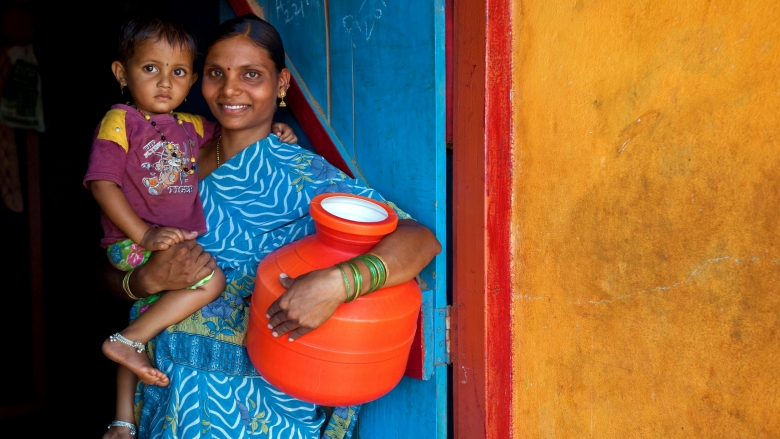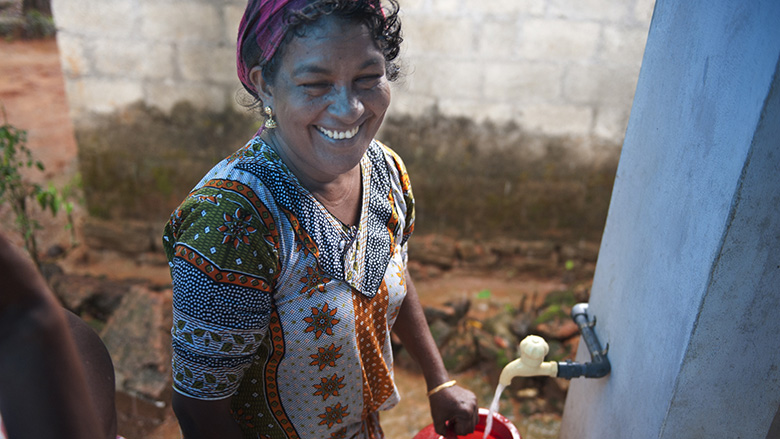Bank Group Contribution
Lending:
In Maharashtra three projects: $181 million, (1991-1998); Jalswarajya 1 $181.0 million (2003-2009); Jalaswarajya 2 $165 million (2014-2020).
In Karnataka three projects: $92.0 million (1993-2000): Jal Nirmal $151.6 million (2002-2013), Additional Financing (2014) $150 million.
In Kerala two projects: Jalanidhi 1 $ 65.5 million (2000-2008); Jalanidhi 2 $153.3 million (2011-2017)
In Uttarakhand two projects: Swajal $56.9 million (1996-2002); $248 million (2006-2015)
In Punjab one project: $ 154 million (2006-2014)
In Andhra Pradesh one project, $125 million (2010-2016)
In four Low Income States one project, $500 million (2013-2020)
Analytical and advisory services: In addition to lending, the World Bank has conducted a number of analytical and advisory activities that have contributed to the dialogue on sector reform. In 2006 and 2008, two major studies were conducted to understand how water supply systems in rural India have evolved over the years, and to ascertain the inefficiencies and barriers that still remained in the improvement of services.
Partners
In Maharashtra the PforR Program established a collaboration between the Massachusetts Institute of Technology and the state’s Water Supply and Sanitation Department to help the latter in developing a strategic framework for planning across the state.
The Uttarakhand project developed various partnerships, especially with the four Low Income States Project to share good practices and service delivery models for decentralizing responsibilities. The M&E system developed under the project has been launched nationally, including in the four low income states.
Moving Forward
Despite progress, providing safe drinking water to millions of India’s rural people remains a challenge. The task is not simple. Each generation of IDA projects has faced new challenges as they sought to make up the backlog in services while meeting rising expectations.
While the first and second generation projects supplied one to four hours of piped water a day, the third and fourth generation of projects have moved towards more flexible timings, and pioneered a shift towards 24/7 water supply.
The rapid rise in the extraction of groundwater has led to major concerns about the depletion of water resources. With a number of regions facing acute water crises, especially during the summer months, projects in Maharashtra and Kerala are now mapping water resources, defining ways to replenish aquifers, and working to ensure the more sustainable use of ground water.
Water quality has also become a major issue. Over the past ten years, the number of communities affected by water quality problems has risen, and solutions are proving to be increasingly complex. Harmful substances such as arsenic, fluoride and even uranium are found in the groundwater in some areas, greatly exceeding World Health Organization (WHO) standards. Experience gained from World Bank projects is expected to further refine the management of water resources, as well as to temper demand.
Going forward, communities’ abilities to plan, construct and implement water supply schemes will need to be improved, as well as their ability to manage ground water in a sustainable manner. This will call for building greater technical capacity among village committees, as well as stronger oversight and support from local governance institutions, together with more reliable electricity supply to help systems function. In areas where the availability of potable water is low and water has to be drawn from surface sources further away, multi-village systems which present a high degree of technical complexity, will need to be built.


